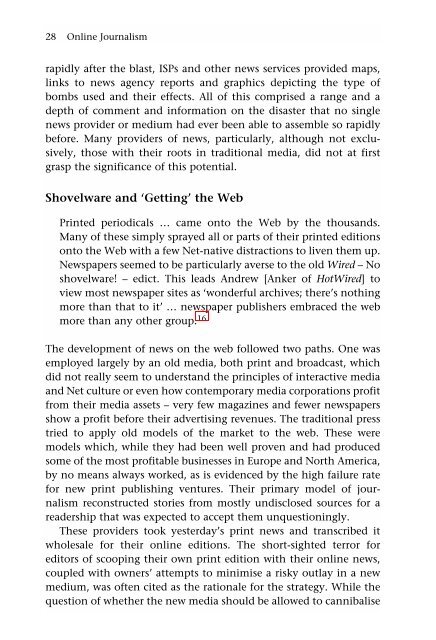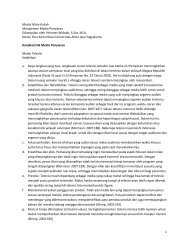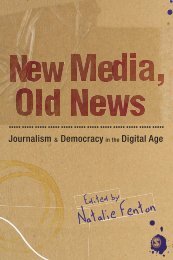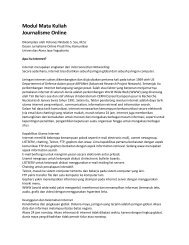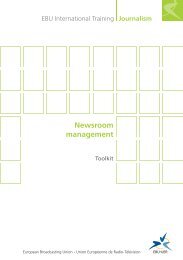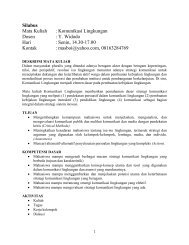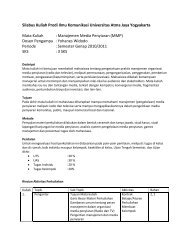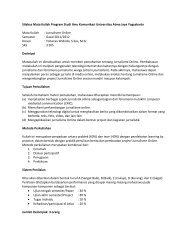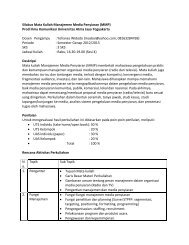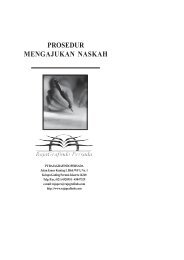Online Journalism - Ayo Menulis FISIP UAJY
Online Journalism - Ayo Menulis FISIP UAJY
Online Journalism - Ayo Menulis FISIP UAJY
Create successful ePaper yourself
Turn your PDF publications into a flip-book with our unique Google optimized e-Paper software.
28 <strong>Online</strong> <strong>Journalism</strong><br />
rapidly after the blast, ISPs and other news services provided maps,<br />
links to news agency reports and graphics depicting the type of<br />
bombs used and their effects. All of this comprised a range and a<br />
depth of comment and information on the disaster that no single<br />
news provider or medium had ever been able to assemble so rapidly<br />
before. Many providers of news, particularly, although not exclusively,<br />
those with their roots in traditional media, did not at first<br />
grasp the significance of this potential.<br />
Shovelware and ‘Getting’ the Web<br />
Printed periodicals … came onto the Web by the thousands.<br />
Many of these simply sprayed all or parts of their printed editions<br />
onto the Web with a few Net-native distractions to liven them up.<br />
Newspapers seemed to be particularly averse to the old Wired – No<br />
shovelware! – edict. This leads Andrew [Anker of HotWired] to<br />
view most newspaper sites as ‘wonderful archives; there’s nothing<br />
more than that to it’ … newspaper publishers embraced the web<br />
more than any other group. 16<br />
The development of news on the web followed two paths. One was<br />
employed largely by an old media, both print and broadcast, which<br />
did not really seem to understand the principles of interactive media<br />
and Net culture or even how contemporary media corporations profit<br />
from their media assets – very few magazines and fewer newspapers<br />
show a profit before their advertising revenues. The traditional press<br />
tried to apply old models of the market to the web. These were<br />
models which, while they had been well proven and had produced<br />
some of the most profitable businesses in Europe and North America,<br />
by no means always worked, as is evidenced by the high failure rate<br />
for new print publishing ventures. Their primary model of journalism<br />
reconstructed stories from mostly undisclosed sources for a<br />
readership that was expected to accept them unquestioningly.<br />
These providers took yesterday’s print news and transcribed it<br />
wholesale for their online editions. The short-sighted terror for<br />
editors of scooping their own print edition with their online news,<br />
coupled with owners’ attempts to minimise a risky outlay in a new<br />
medium, was often cited as the rationale for the strategy. While the<br />
question of whether the new media should be allowed to cannibalise


